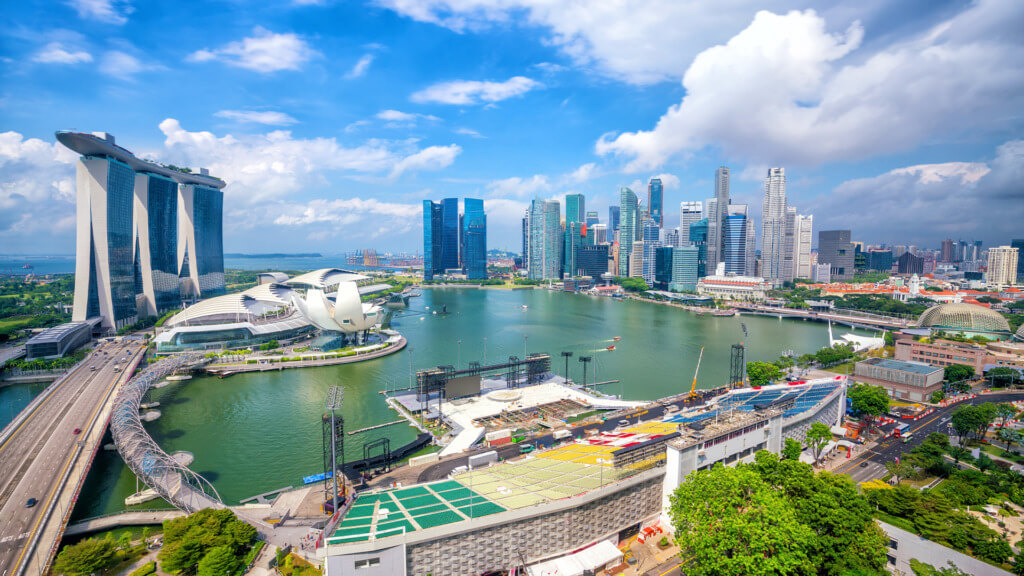In the prevailing narrative of 21st-century urban development, a buzz term has been making the rounds for quite a few years now. You’ve probably heard it before: “smart cities”. We often drift towards high-tech urban landscapes brimming with advanced technologies when we hear about smart cities. We envision autonomous vehicles, connected infrastructure, smart grids, and Internet of Things (IoT) devices that manage everything from waste collection to traffic lights.
However, a significant piece of the puzzle is frequently overlooked. These aspects are the people who inhabit these cities and the design principles that govern how they interact with their surroundings. In reality, smart cities are as much about total urban design and active public engagement as they are about cutting-edge technology.
Total Design as the backbone of smart cities
When you look past the gleaming technologies, the concept of a smart city is about creating a city that serves its citizens better. A city that’s efficient, sustainable, accessible, and livable. It’s not just about installing sensors or launching mobile apps; it’s about employing a comprehensive design approach, which we refer to as Total Design.
Total Design is the thoughtful and deliberate organisation of urban elements to support an integrated and comprehensive city plan. It involves urban design, architecture, public spaces, transport systems, and even things as mundane as garbage collection or as critical as disaster management. The aim is to ensure the urban environment is conducive to healthy and enjoyable living for all residents.
Putting the citizens at the heart of smart cities
Your involvement as a citizen is crucial in shaping smart cities. Public engagement is more than just a buzzword to be thrown around in city planning meetings. It’s the backbone of a successful smart city project. Engaging the citizens in the planning and implementation process allows for an urban environment that caters to their needs and encourages active participation.
Local governments can facilitate this by establishing robust channels for public communication and input, encouraging transparency and creating opportunities for residents to participate in decision-making processes actively. Technology is vital in facilitating this engagement, providing platforms for public discourse, gathering feedback, and even crowd-sourcing ideas for urban improvement projects.
The symbiosis of technology and human-centric design
While it’s true that the human element and Total Design take centre stage in making smart cities, it would be good to mention technology’s role in this transformation. Advanced technologies such as artificial intelligence, IoT, big data, and blockchain provide the necessary tools to make cities smarter.
In the right hands, technology becomes the instrument through which Total Design and citizen engagement can flourish. It provides the data to inform better design decisions and the platforms to engage citizens more effectively. When technology, Total Design, and public engagement are integrated, it can result in smart cities that truly serve their citizens.
The intersection of technology and culture

Undeniably, technology plays a critical role in shaping smart cities. However, it should be viewed as a tool that aids in creating culturally vibrant and inclusive cities. As a city evolves and grows smart, it should maintain a robust connection to its cultural heritage and community values. The utilisation of technology should be guided by understanding the unique characteristics of the city’s population, cultural heritage, and environment.
Cities like Barcelona, for instance, have demonstrated how technology can be used to protect and promote cultural heritage. The city uses digital tools to create virtual tours of cultural landmarks and hosts online databases that educate locals and tourists about the city’s historical heritage. This way, Barcelona seamlessly integrates technology with culture, promoting its heritage and encouraging citizen engagement.
Smart cities are green cities
In the era of climate change and environmental uncertainty, smart cities also have a pivotal role in driving sustainability. Total urban design must incorporate green design principles, ensuring the city’s growth is in harmony with its natural environment. Green spaces, renewable energy, sustainable transport, and resource-efficient buildings are essential for smart city design.
Take Copenhagen as an example. The city is often hailed as a model for green urban living, using technology to monitor and manage its environmental footprint. From promoting cycling and public transport to utilising renewable energy for city functions, Copenhagen epitomises how smart city design goes hand in hand with environmental sustainability.
Partnerships are pivotal
Public-private partnerships are another crucial component in the smart city equation. Governments, businesses, academia, and civil society must collaborate to make the dream of smart cities a reality. It is through these collaborations that innovative solutions can be generated and implemented at scale.

Singapore, known worldwide as a smart city pioneer, is an example of how effective partnerships can lead to innovative urban solutions. Through collaborative efforts, the city-state has developed intelligent transport systems, smart homes, and digital services for citizens, making it one of the world’s most technologically advanced and livable cities.
Painting the canvas of future cities together
Looking ahead, smart cities represent an exciting frontier in urban development. However, to achieve their full potential, we must ensure their evolution is technologically advanced and fundamentally human-centric. We must promote cities where technology serves the people, not vice versa.
The challenge is to balance the allure of new technology and the essential human need for connection, culture, and community. As a citizen, your voice is instrumental in shaping this future urban landscape. Together, we can ensure that our cities are smart but also sustainable, inclusive, and vibrant places to live.
Let’s move forward with this knowledge, applying it to build smart cities that are truly designed around us, their inhabitants. Let’s engage with one another, and with technology, in meaningful ways to make our urban homes smarter, greener, more connected, and above all, more human. As we paint the canvas of our future cities, remember, it’s not just about being smart, but about being smart together.





